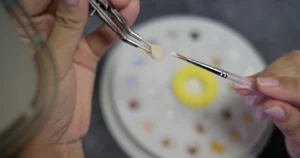Root canal therapy often conjures up images of extreme discomfort and pain, a perception that has persisted for years. However, this fear largely stems from misunderstandings about the procedure. Root canal therapy is a classic dental procedure designed to treat infected or damaged teeth, aiming to preserve the natural tooth while eliminating pain caused by infection. This introduction sheds light on root canal therapy’s realities, addressing common concerns and fears. With advancements in dental technology, the procedure has become more comfortable and efficient, challenging the long-held beliefs about its painful nature.
What is Root Canal Therapy?
Root canal therapy is a dental procedure focused on treating problems within the interior of a tooth, explicitly targeting the tooth’s pulp. This pulp, located in the tooth’s root canal, contains nerves and blood vessels and is crucial for a tooth’s growth and development. However, once a tooth matures, it can survive without the pulp. In root canal therapy, the dentist removes the infected or inflamed pulp, cleanses and shapes the interior of the root canal, and then fills and seals the space to prevent further infection. This treatment is essential for saving a tooth that may otherwise need to be pulled due to disease or decay. It’s a precise and careful process that has evolved significantly with modern dentistry, making it more efficient and less discomfort than many fear.
Misconceptions About Root Canal Pain
Root canal therapy, often associated with severe pain, is one of the most misunderstood dental procedures. This misconception largely stems from the past when dental technologies and anesthesia were less advanced than they are today. Modern root canal treatments are typically less painful than commonly believed. The primary cause of pain is not the treatment itself but the infection in the tooth before the procedure. Root canal therapy alleviates this pain by removing the infected pulp and cleaning the tooth’s canal.
Despite lingering fears, endodontic treatments like root canals are often painless and preferable to tooth extraction or neglect, which can lead to further complications. By managing the root cause of the pain, the treatment offers relief and preserves the tooth, negating the need for more invasive procedures.
While some discomfort or tenderness might be experienced post-treatment, primarily as the anesthetic wears off, this is usually mild and short-lived. It’s important to note that any pain felt after the procedure is typically due to the healing process, not the treatment itself. Patients are counseled to avoid chewing hard foods briefly after a root canal to minimize discomfort. Most patients report that any post-procedure pain subsides within a few days.
How Root Canal Can Help
Root canal therapy plays a crucial role in dental health by treating infected or damaged teeth, thereby preventing the need for tooth extraction. The primary goal of this treatment is to save a tooth that has been compromised by infection or decay. Here’s how it helps:
- Eliminates Pain and Infection: The procedure involves extracting the infected or inflamed pulp from the tooth. Since the pulp contains nerves, its removal significantly reduces pain caused by the infection.
- Preserves Natural Teeth: Root canal therapy allows patients to keep their natural teeth by treating and saving the infected tooth. It is preferable to extract the tooth and replace it with an artificial one, which can be more complex and costly.
- Prevents Spread of Infection: By removing the infected pulp, root canal therapy stops the spread of infection to other parts of the mouth, leading to more severe dental issues and even affecting overall health.
- Restores Tooth Functionality: After the infected pulp is extracted and the tooth is cleaned and sealed, it can function like any other tooth. It means a return to normal biting force and sensation and a natural appearance.
- Long-Term Solution: A successful root canal can last a lifetime, making it a long-term solution for an infected tooth. It’s a highly effective procedure with a high success rate.
Root canal therapy is a beneficial dental procedure that not only relieves pain but also preserves the natural tooth, prevents further infection, restores functionality, and offers a long-term solution for dental health.
The Procedure of Root Canal Therapy
The root canal therapy procedure is a meticulous and systematic process aimed at saving a tooth compromised by infection or decay. Here’s an overview of the typical steps applied in this procedure:
- Diagnosis and X-ray: The process begins with a thorough examination of the affected tooth, including X-rays, to determine the extent of the infection.
- Anesthesia: Local anesthesia is dispensed to numb the tooth and surrounding area. This step ensures that the patient is comfortable and pain-free during the procedure.
- Access Opening: The dentist or endodontist makes a small opening in the tooth’s crown to access the pulp chamber.
- Pulp Removal: The infected or diseased pulp is carefully removed from the pulp chamber and root canals (the narrow channels inside the tooth).
- Cleaning and Shaping: Once the pulp is removed, the canals are thoroughly cleaned, enlarged, and shaped to prepare them for the filling material. This cleaning process also removes any remaining bacteria or debris.
- Filling the Canals: After cleaning and shaping, the root canals are filled and sealed with a biocompatible material, usually a rubber-like gutta-percha. This step prevents bacteria from re-entering the tooth and causing further infection.
- Sealing the Tooth: The access hole created at the beginning of the procedure is then filled with a temporary or permanent filling.
- Restoration of the Tooth: Often, a tooth that has undergone a root canal will need a crown or other restoration to protect it and restore it to full function. This final restoration step is crucial to ensure the tooth can withstand the forces of biting and chewing.
The dentist may use specialized equipment throughout the procedure, including microscopes and digital imaging, to enhance precision and success. While the process can vary slightly depending on the specific case and the tooth involved, these are the general steps in root canal therapy. The procedure commonly requires one or two visits, depending on the tooth’s structure’s complexity and the infection’s severity.
Takeaway
Experience the comfort and care of modern dentistry with Luth & Heideman Center For Dental Care. If you’re facing dental discomfort or suspect you need root canal therapy, don’t let anxiety hold you back. Our team employs the latest technology to guarantee your treatment is as painless and efficient as possible. Trust us to preserve your natural smile and alleviate any discomfort. Book your appointment or call us today and take the first phase towards a healthier, pain-free smile with Luth & Heideman Center For Dental Care. Your dental health is our top priority!






